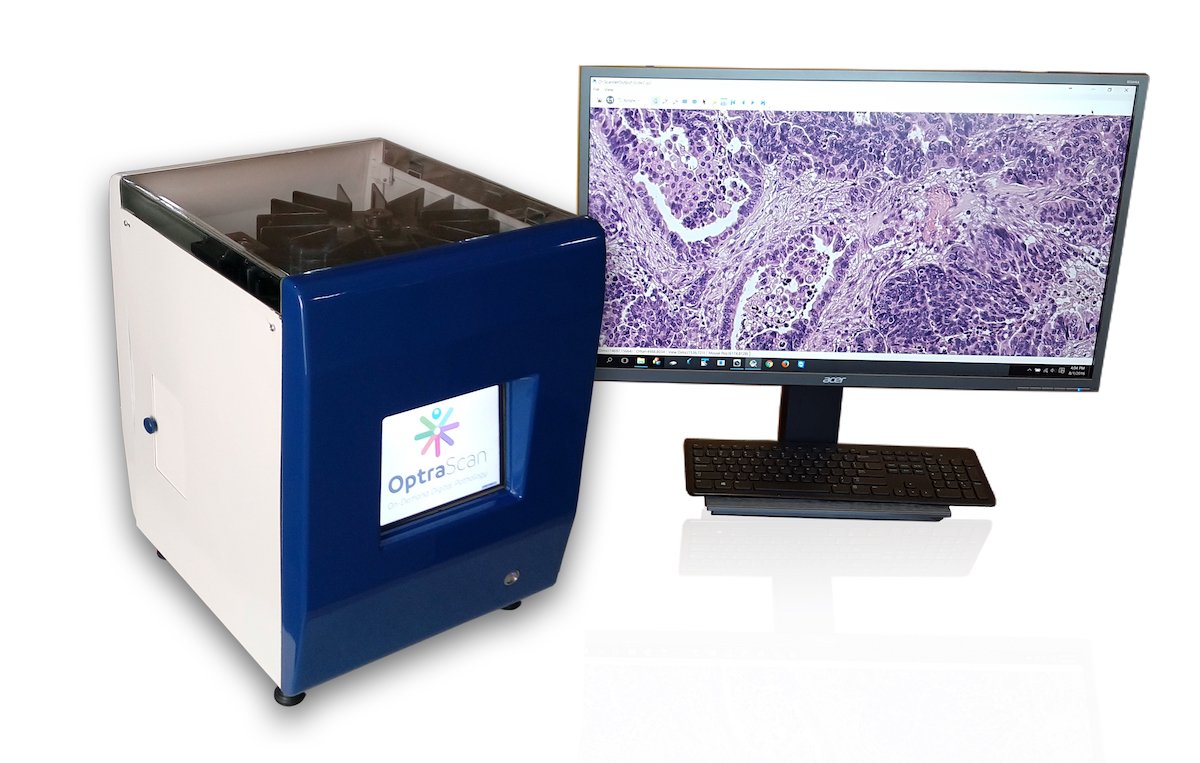
Medical testing laboratories have always relied on cutting-edge technology to achieve better results, but the widespread availability of low-cost computers has dramatically sped up innovation. Overall, this has saved labs money, though equipment upgrades are costly and can, with a lack of good oversight, increase electronic waste. One relatively recent technology, whole slide imaging, uses a workstation computer to analyze specimens instead of a microscope, opening a range of possibilities and benefits for labs.
How WSI Works
WSI uses digital imaging to capture in extremely high detail what you could see through microscope lenses. Physical access to slides becomes unnecessary, changing the entire workflow and user experience. By combining a fully digitized image and new software, fantastic opportunities are created including (but not limited to) non-local collaboration, full digital integration for HIPAA requirements and AI-assisted diagnosis.
Benefits of WSI
Digitizing the slide creates exciting new possibilities for lab personnel. Software can help analyze and map the image and its contents. The image can be easily and permanently stored and shared with anyone connected to the internet, regardless of distance. Tissue samples that would otherwise degrade are forever kept pristine. Underprivileged and underserved communities can have remote access to expert diagnosis, and publication of important images is as easy as the click of a mouse.
Disadvantages of WSI
Simply put, the positives of WSI virtually always outweigh the negatives, but that doesn’t mean there aren’t any. The systems are still somewhat complex, although this is gradually changing. The workstation computer needed must have an excellent (and expensive) graphical processor unit – often more than one – and these become obsolete surprisingly fast, adding to costs and creating more electronic waste. Some regulatory barriers have also held up progress for WSI use in primary diagnosis, but recent changes have significantly reduced this issue. Probably the most challenging obstacle is management who are unfamiliar with – or actively hostile towards – new technology, or who weigh the initial costs of implementation too heavily compared to long-term savings and better patient outcomes.
Dealing With Laboratory Electronic Waste
Along with the rapid turnover of IT components, medical testing labs have somewhat unique needs regarding e-waste. Their specialized equipment, often large and heavy, is frequently prohibited from landfills, and HIPAA has very specific privacy requirements that dramatically impact how electronic waste is disposed. TechWaste Recycling is a certified data destruction and electronics recycler that can handle every e-waste need of your company. They are used to serving both major industries and small businesses and will happily answer any questions you have about handling your unneeded electronics.
TechWaste Recycling directly services all of Southern California and provides pickup services to its facilities from nationwide locations. Visit TechWaste Recycling’s website at www.techwasterecycling.com to schedule a pickup that works for your convenience and schedule.
Learn more about TechWaste’s laboratory equipment recycling process here: Lab Equipment Disposition Services
Contact Info:
Richard Steffens
1940 E. Occidental street
Santa Ana, CA 92705
Phone: 866-637-8469

































